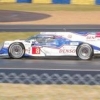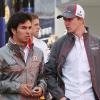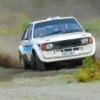Has anyone else looked at the new Virtual Safty Cars Rules? Its a totally joke in my view, what on earth are the FIA thinking!
The problems is It will not slow cars any more than the current safety car system. In fact it will do the entire opposite and allow more cars to run faster (while still slower then their top speed). Because the leader no longer has to slow more than everyone else once they are on the tail of the safty car.
There is no mention of a top speed limit, only a mention of staying above a minimum speed?????
What is the point of closing the pits for everything apart from a tyre change? Ok serving penalties... But what about situation of damaged front nose for example? I see the VSC being used at times where the chance of a damaged car racing as quite high. Under the VSC rules any damaged car cannot pit for repair (nose replacement). clearly instead of closing the pits the rule should be no Driver/Team penalties can be served while the VSC is active..
I'm really disappointed with the FIA. More so than I already was.































